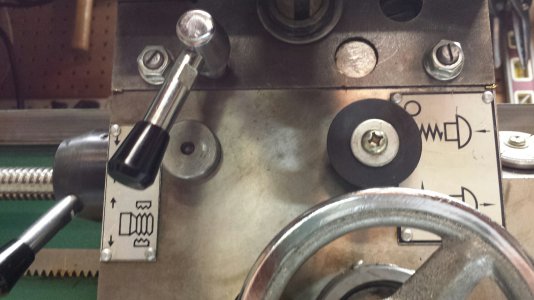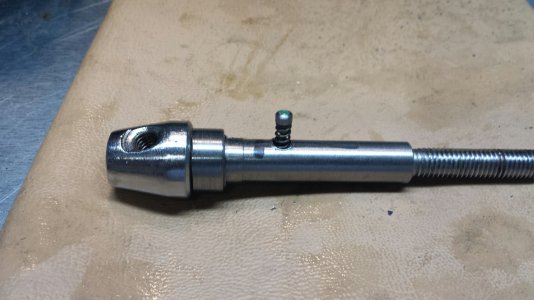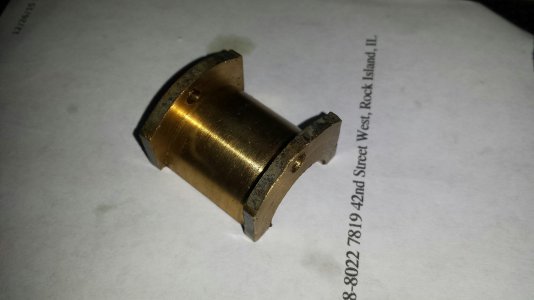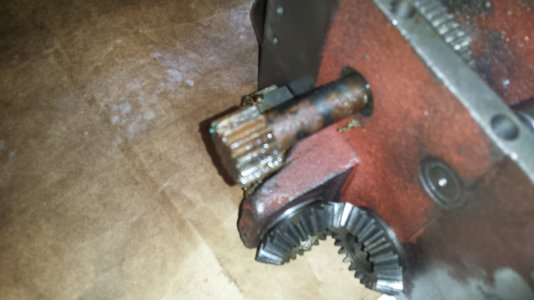- Joined
- Jan 14, 2013
- Messages
- 290
Can you post a pic of the back side of the half nut?
Is it held in place with a cross pin?
Looking at the manual, that lathe only uses one piece of what most is commonly known as a set. If so then its going to wear out rather fast because it is pushing /ridding and not clamping the leadscrew as half nuts are designed to do.
Folks have been making half nut from derlin/actel. The projects in metal group seem to be having success from what I have read,
so that might be a possible solution for you to look into.
Your leadscrew is 6 tpi
Is it held in place with a cross pin?
Looking at the manual, that lathe only uses one piece of what most is commonly known as a set. If so then its going to wear out rather fast because it is pushing /ridding and not clamping the leadscrew as half nuts are designed to do.
Folks have been making half nut from derlin/actel. The projects in metal group seem to be having success from what I have read,
so that might be a possible solution for you to look into.
Your leadscrew is 6 tpi
Last edited:







 the halfnut thread wear appears to be primarily on the outside of the thread if so I am thing that the halfnut needs to be closer to the lead screw.
the halfnut thread wear appears to be primarily on the outside of the thread if so I am thing that the halfnut needs to be closer to the lead screw.